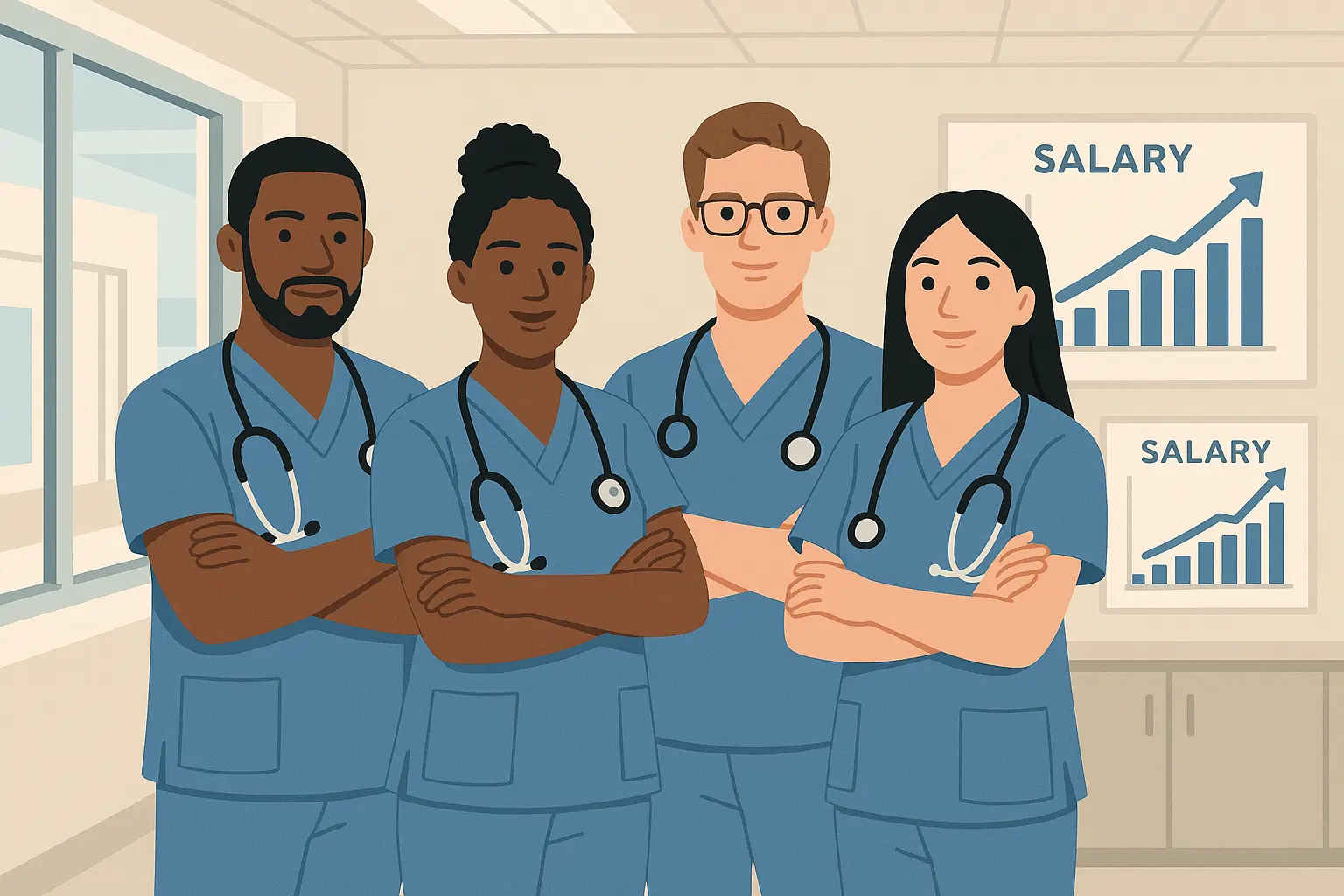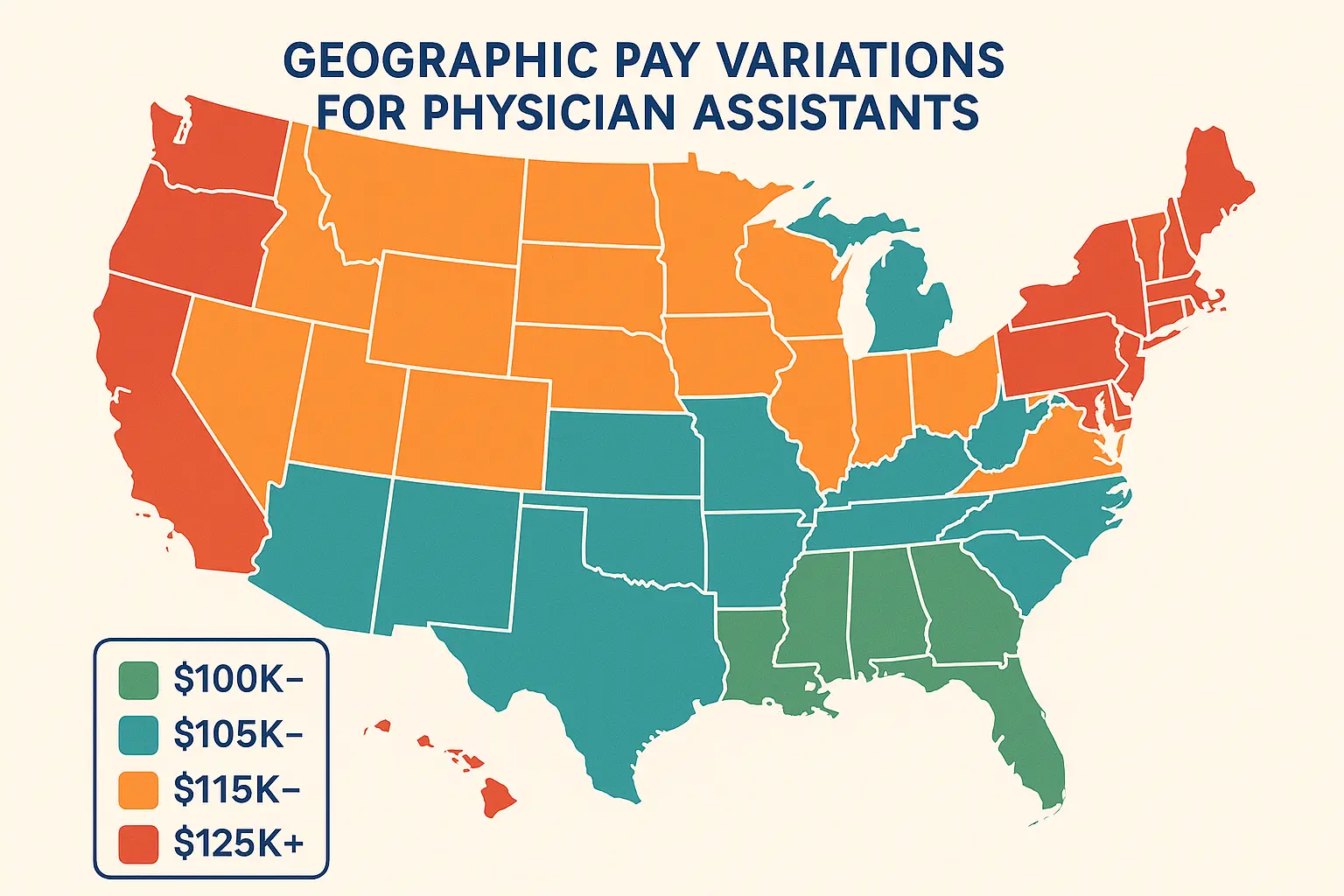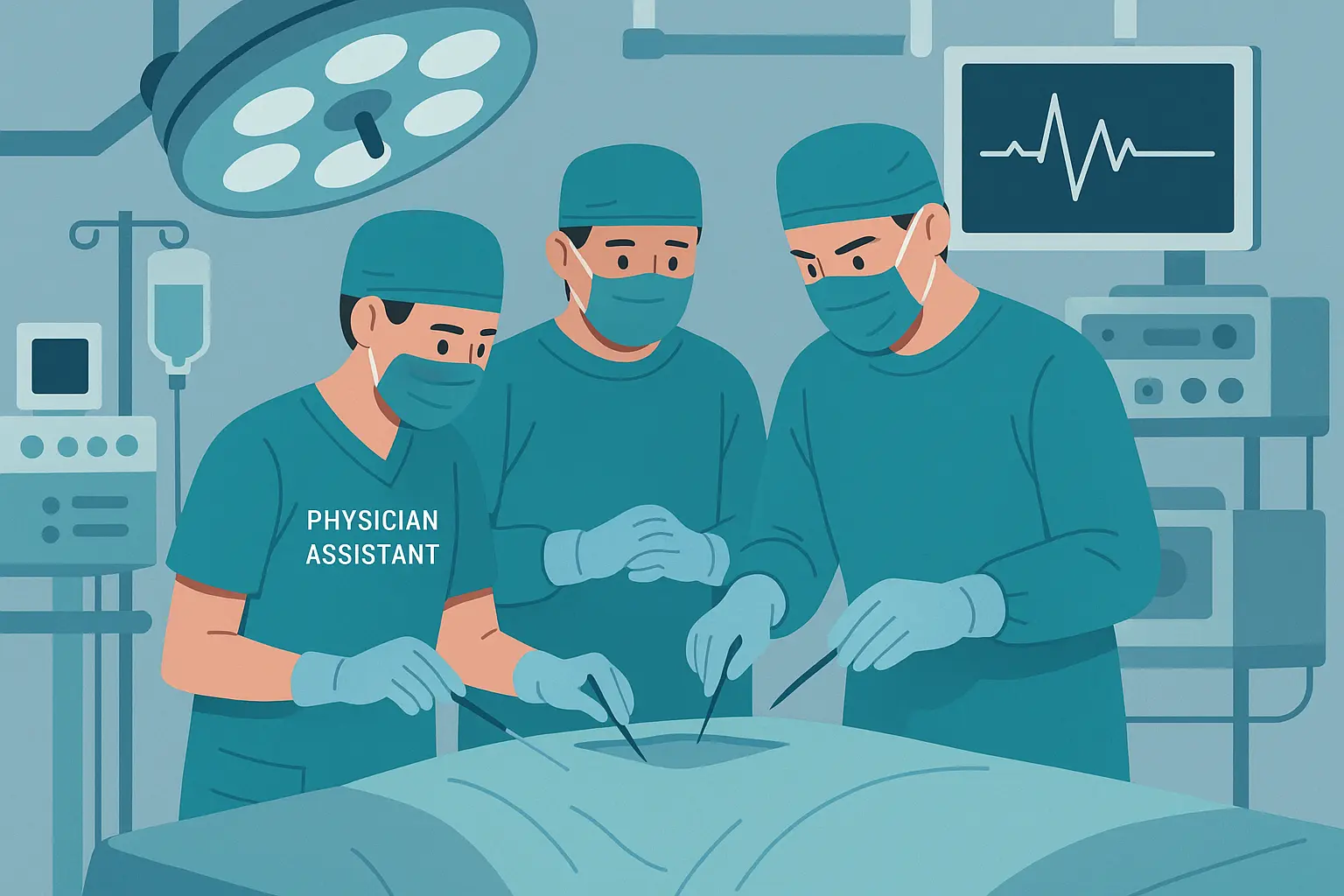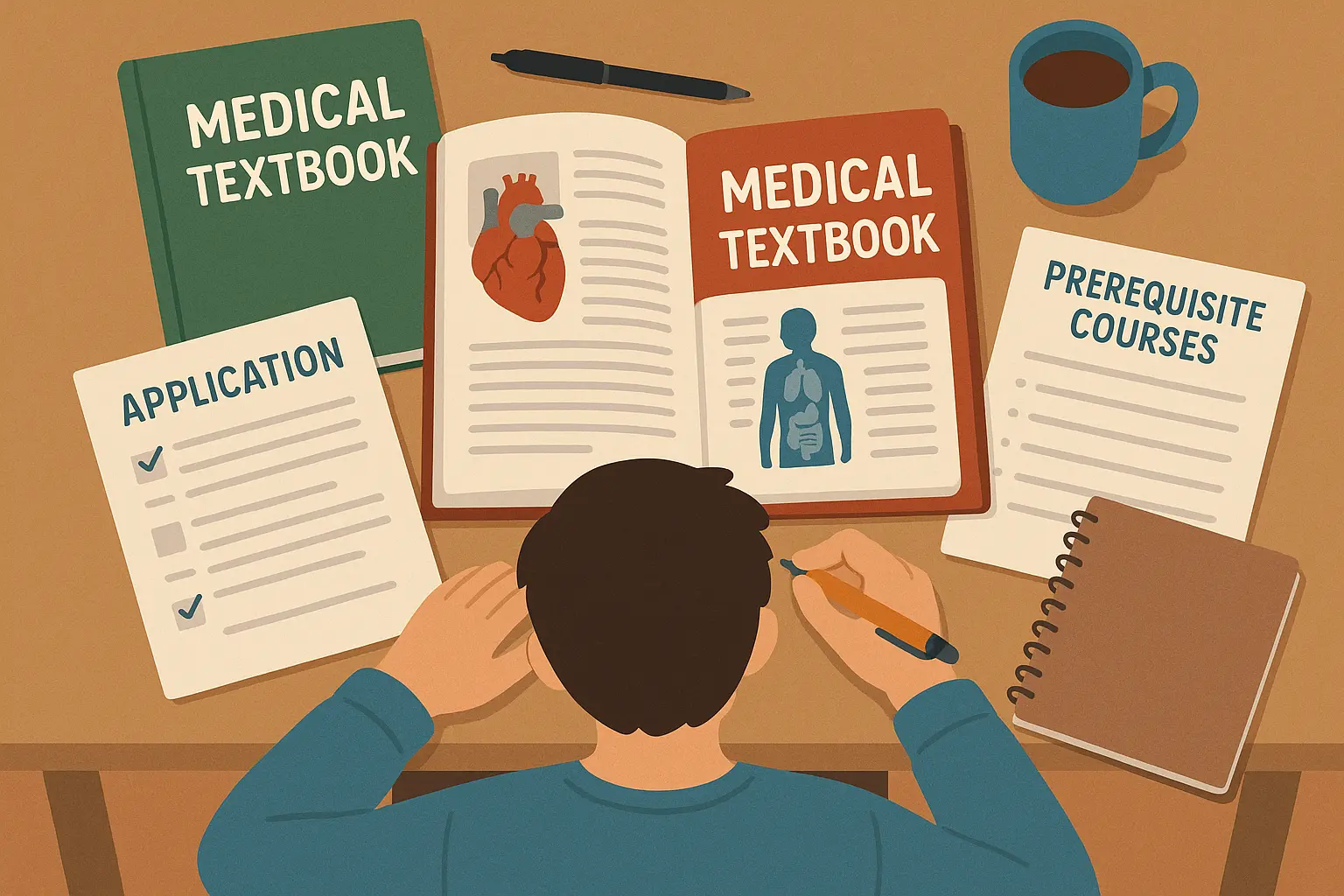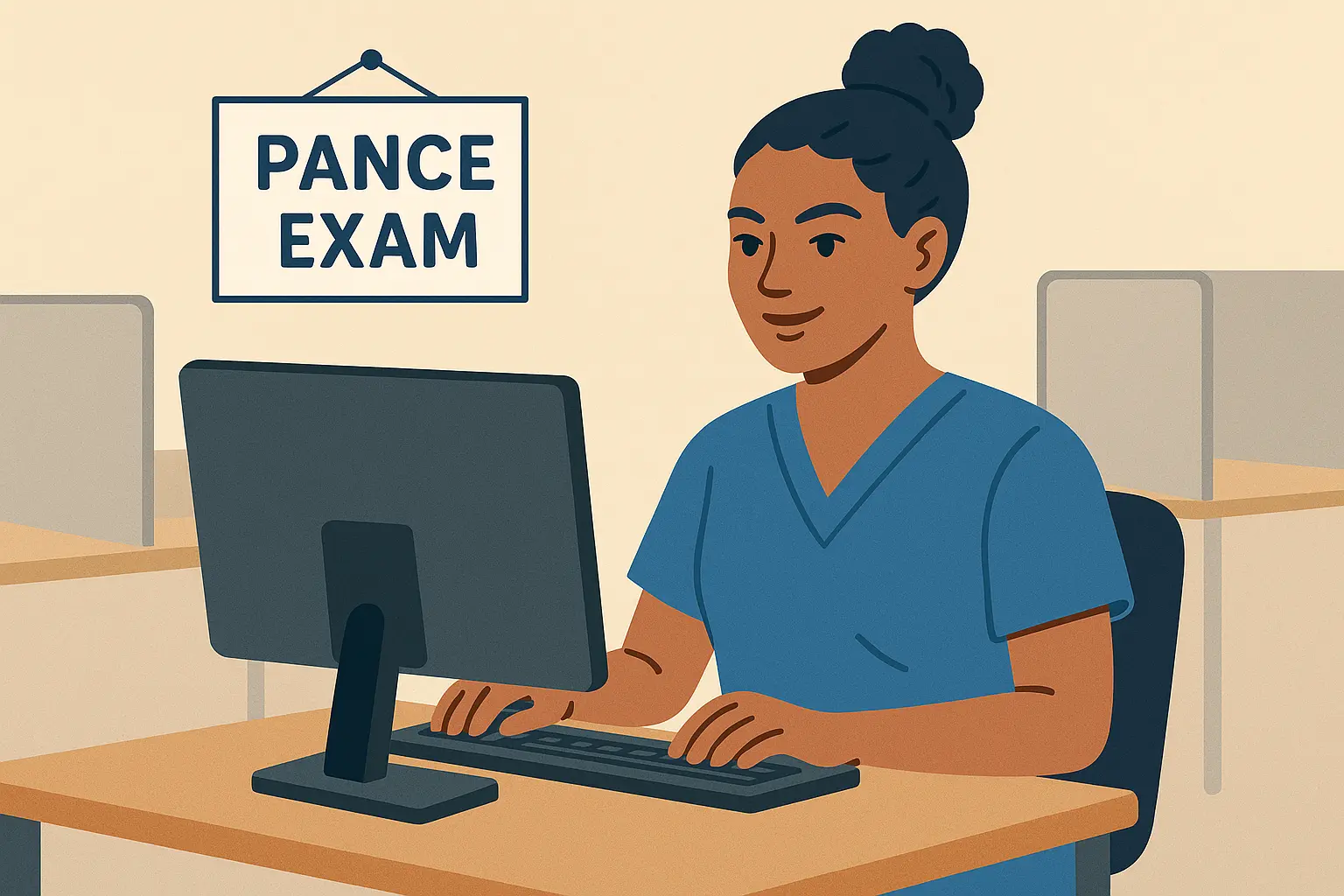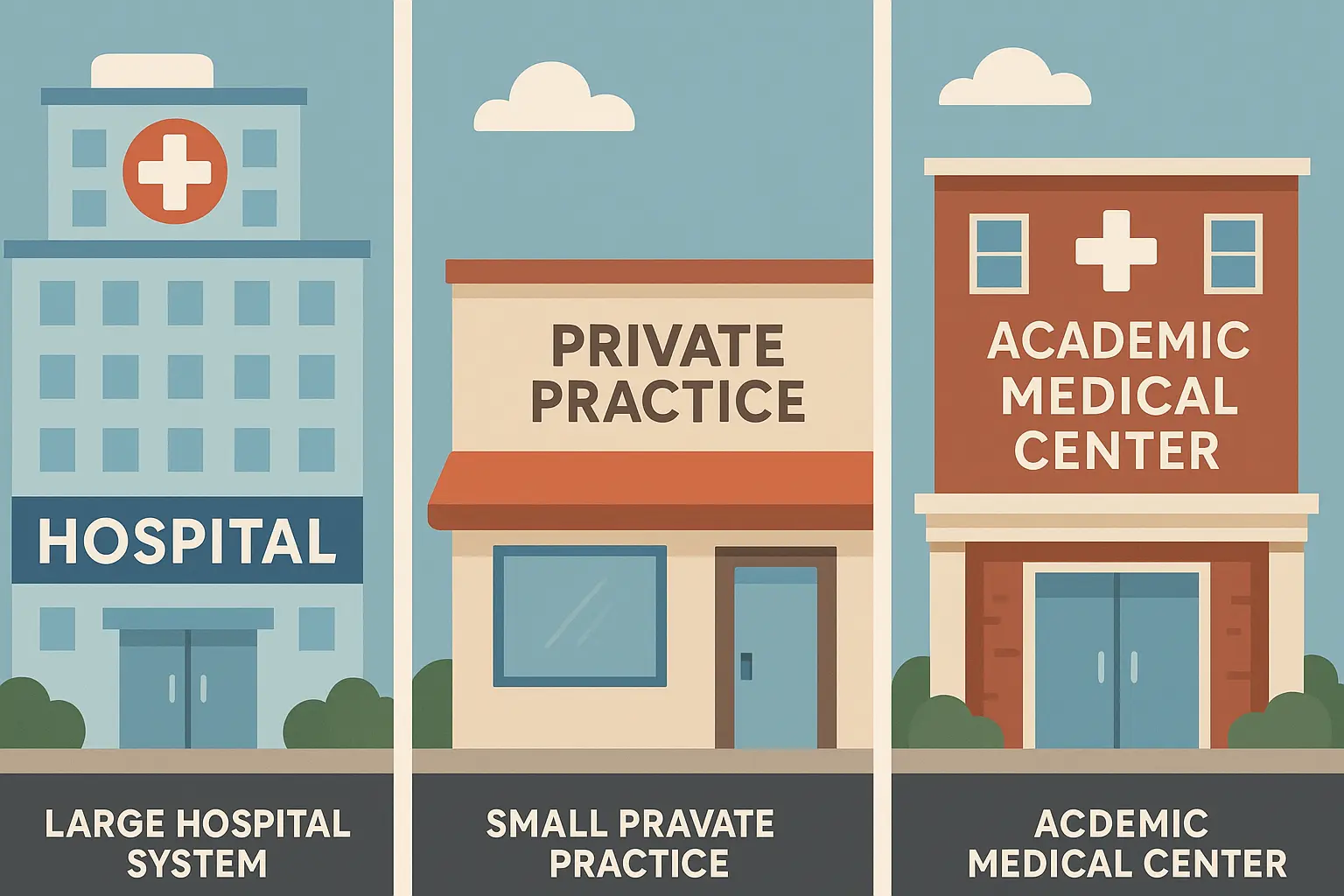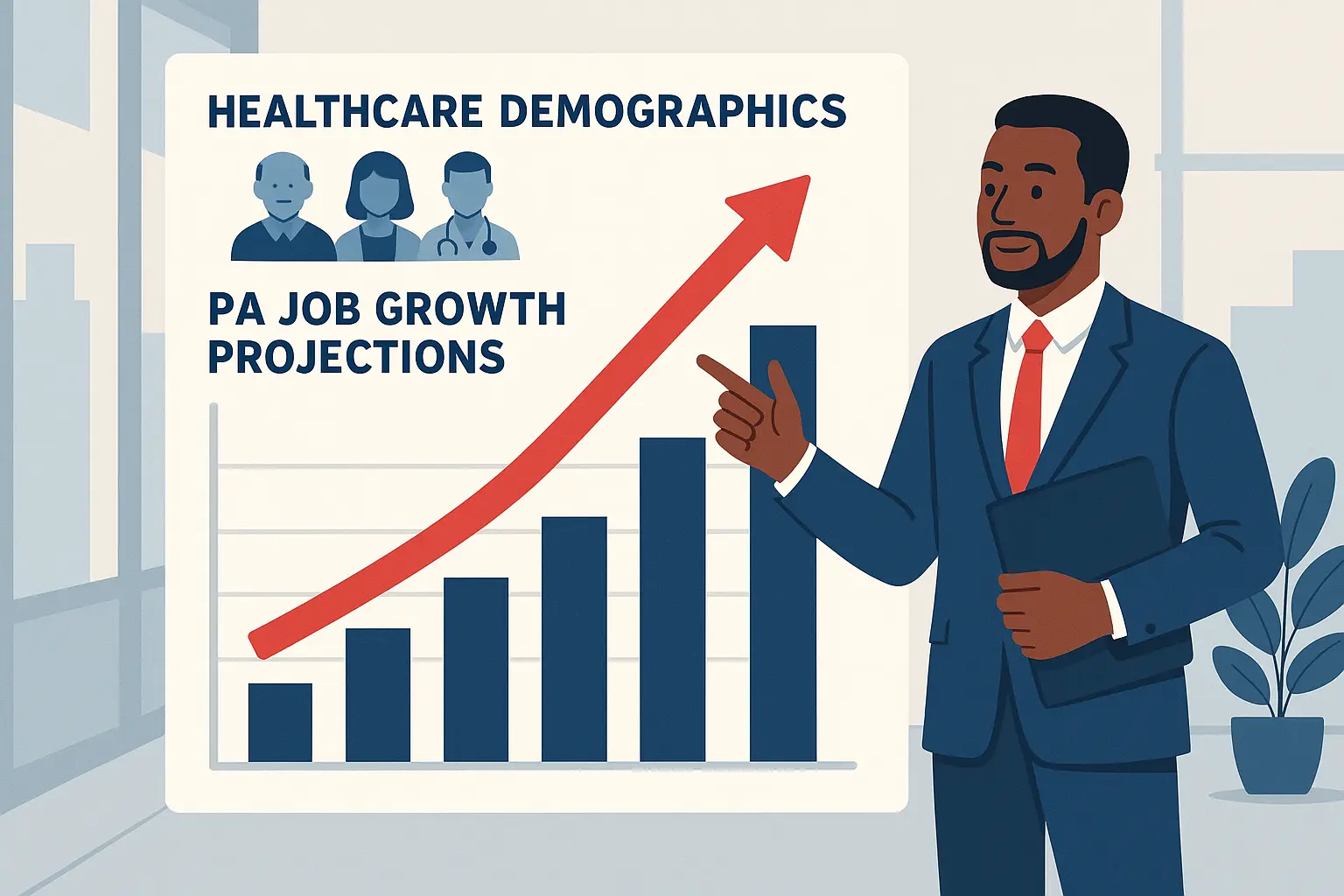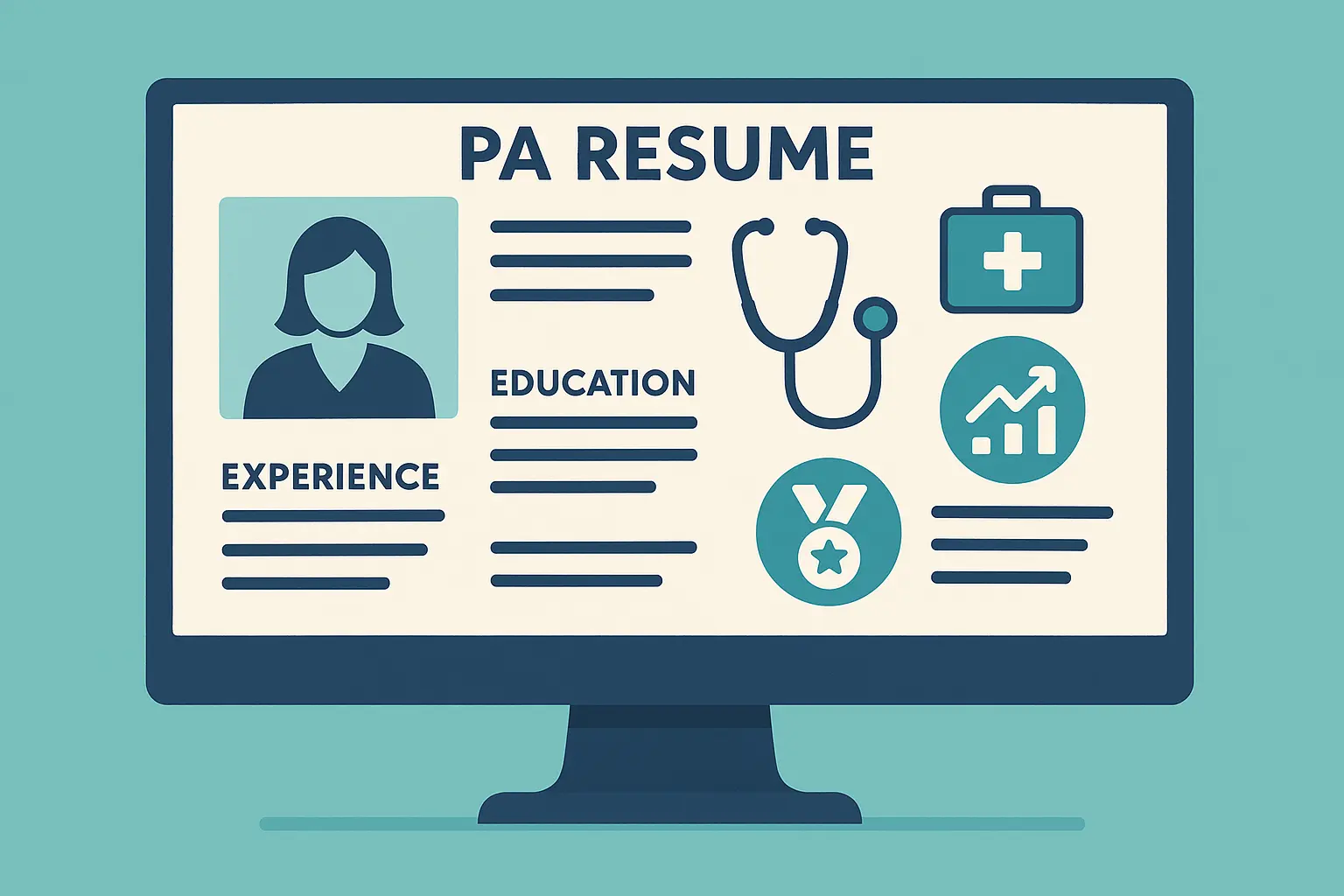PA Salary Secrets: What Nobody Tells You About Physician Assistant Pay

Here’s the thing about PA salaries that nobody talks about: those generic “average PA salary” numbers you see online? They’re basically useless.
I’ve been digging into PA compensation data for years, and the real story is way more interesting. Where you work matters more than you think. Your specialty choice could bump your paycheck by 25%. And those “hidden” benefits? They’re adding serious money to your total package.
With PA jobs growing 20% from 2024 to 2034 – much faster than most other careers – now’s the time to understand what you’re really worth. The healthcare sector’s commitment to competitive compensation is evident globally, as seen in recent “German emergency payment” efforts to ensure healthcare worker salaries can be paid during financial challenges, highlighting how critical proper compensation is for maintaining healthcare services.
Table of Contents
- What PAs Actually Make
- Location Matters More Than You Think
- Specialties That Pay More
- Benefits That Actually Add Up
- Getting There: Education and Costs
- The Certification Game
- Negotiation Tactics That Work
- Career Growth That Pays
- What’s Coming Next
TL;DR
- New PAs start around $95,000-$110,000, experienced ones earn $120,000-$140,000+
- Surgical specialties pay 15-25% more than general practice
- Alaska, Connecticut, and California lead in pay, but factor in cost of living
- Rural jobs often include loan forgiveness and signing bonuses worth tens of thousands
- Benefits add $15,000-$25,000 in real annual value
- 31% job growth through 2030 means continued salary increases
- Leadership and specialty roles can hit $150,000-$200,000+
What PAs Actually Make
Let’s cut through the BS and talk real PA salary numbers that actually matter. Fresh out of school, you’re looking at $95,000-$110,000. Not bad for your first job, right? But here’s where it gets interesting – your salary jumps happen fast if you play your cards right.
The Bureau of Labor Statistics shows about 12,000 PA openings projected each year, with many openings from workers transferring to different occupations or retiring. This demand drives competitive salaries across experience levels.
After 3-7 years, you’ll likely hit $110,000-$125,000. The sweet spot comes around year 8 when experienced PAs start seeing $120,000-$140,000+. And if you get into leadership or rare specialties? We’re talking $150,000-$200,000+.
| Experience Level | Salary Range | Key Factors |
|---|---|---|
| Entry-level (0-2 years) | $95,000-$110,000 | Location, practice setting, specialty |
| Mid-career (3-7 years) | $110,000-$125,000 | Clinical expertise, patient outcomes |
| Experienced (8+ years) | $120,000-$140,000+ | Leadership roles, specialization |
| Senior/Specialized (10+ years) | $140,000-$200,000+ | Management, rare specialties |
But here’s what nobody tells you: location trumps everything else.
Location Matters More Than You Think
Alaska pays PAs an average of $130,000+. Yeah, it’s cold and remote, but your bank account won’t mind. Recent data shows PAs in the Pacific region, including Alaska and Hawaii, make a mean annual salary of $159,000—the highest of all regions, followed by the Mountain region at $147,000 and New England at $145,000.
But before you start packing for Anchorage, do the math. That $125,000 PA salary in San Francisco barely covers rent. Meanwhile, $105,000 in Kansas City gets you a house with a yard and money left over.
Here’s a smart move: Sarah got offers for $108,000 in rural Montana (plus $30,000 loan forgiveness) and $118,000 in Seattle. On paper, Seattle looked better. In reality? Montana’s total package plus lower living costs put her ahead by $20,000+ over five years.
Rural vs Urban: The Real Deal
Rural positions throw money at you to come work there. We’re talking:
- $20,000-$50,000 loan forgiveness over 3-5 years
- $10,000-$25,000 signing bonuses
- Competitive salaries that match urban areas
The catch? You might be the only PA for miles. Longer hours, more variety, less backup. But financially? It often beats city jobs hands down.
Urban positions rarely offer signing bonuses unless you’re entering a highly specialized field. You get more colleagues and backup, but you’re paying premium prices for everything from housing to coffee.
Specialties That Pay More
Want to make serious money? Specialize. But not all specialties are created equal.
Surgery: Where the Big Paychecks Live
According to recent data, the average surgical PA salary reaches around $158,000, the highest figure of any practice setting. Orthopedic surgery, cardiovascular, neurosurgery – they all pay 20-25% above general practice.
But let’s be real: you’re assisting in life-or-death procedures, working long hours, and dealing with high-stress situations daily. The money’s there because the job demands it.
Emergency medicine PAs make $133,990 base, but here’s the kicker – shift differentials for nights, weekends, and holidays can push you past $150,000. Critical care offers similar money for similar stress levels.
Dermatology hits $145,000 and has better hours, but good luck getting in. Those positions are rare and competitive.
| Specialty | Median Salary | Premium Over General Practice | Key Requirements |
|---|---|---|---|
| Cardiovascular/Cardiothoracic | $152,500 | 25-30% | Specialized training, high-stress tolerance |
| Dermatology | $145,000 | 20-25% | Certificate of Added Qualifications (CAQ) |
| Emergency Medicine | $133,990 | 15-20% | Broad clinical knowledge, shift flexibility |
| Occupational Medicine | $133,120 | 15-18% | DOT certification, workplace health focus |
| Critical Care | $133,000 | 15-18% | ICU experience, ventilator management |
| Psychiatry | $130,000 | 12-15% | Mental health specialization |
The trade-off for higher pay includes irregular schedules, high-stress situations, and the emotional toll of dealing with trauma and critical illness daily. However, many PAs find the variety and intensity professionally rewarding despite the challenges.
Benefits That Actually Add Up
Smart PAs know base PA salary is only part of the story. Benefits add $15,000-$25,000 in real value annually.
Health insurance alone saves you $15,000-$20,000 yearly compared to buying individual coverage. 401(k) matching gives you free money – typically 3-6% of your salary. On a $120,000 salary, that’s up to $7,200 in your pocket.
Don’t forget the smaller stuff: professional liability insurance, continuing education allowances, licensing fees. They add up to several thousand you won’t pay out of pocket.
Benefits Evaluation Checklist:
- ☐ Health insurance premium coverage percentage
- ☐ Deductible amounts and out-of-pocket maximums
- ☐ 401(k) matching percentage and vesting schedule
- ☐ Professional liability insurance coverage
- ☐ Continuing education allowance amount
- ☐ Paid time off accrual rate
- ☐ Disability insurance coverage
- ☐ Life insurance benefits
- ☐ Flexible spending account options
- ☐ Tuition reimbursement programs
Most positions include comprehensive health coverage for your family, dental and vision coverage adding $2,000-$3,000 in annual value, and professional development opportunities that enhance your long-term earning potential.
Getting There: Education and Costs
PA school isn’t cheap or easy. The path to those six-figure salaries requires serious commitment and strategic planning.
You need:
- Bachelor’s degree with specific science courses (anatomy, physiology, chemistry, microbiology)
- 3.5+ GPA (3.0 minimum, but be realistic about competition)
- 1,000+ hours direct patient care experience
- Strong CASPA application to 8-12 programs
Programs cost $60,000-$150,000 depending on public vs private. Factor in 27 months of no income while you’re in school. That’s a significant investment, but the payoff comes quickly compared to other healthcare careers.
Marcus worked as an EMT for three years, racked up 2,400 patient care hours, maintained a 3.7 GPA, and got into his top choice program with a 96% PANCE pass rate. His strategy? Start building patient care hours early and don’t just meet requirements – exceed them.
Look for programs with PANCE pass rates above 95% and strong clinical rotation partnerships. The program you choose impacts your career trajectory and earning potential, so research thoroughly before committing.
The Certification Game
PANCE is your gateway to earning. The 93% pass rate sounds good until you realize failure means delayed paychecks and extra costs. Prep materials run $1,000-$3,000, plus the $475 exam fee.
Pass on your first try. Retakes cost money and time, plus employers notice multiple attempts. The exam covers medical knowledge across all specialties, so preparation needs to be comprehensive even if you plan to specialize.
State licensing varies wildly. Some states let PAs practice more independently (and pay more for it). Others require closer physician supervision. Most states require PANCE passage plus application fees ranging from $100-$500.
State Licensing Preparation Checklist:
- ☐ Research state-specific licensing requirements
- ☐ Complete PANCE examination successfully
- ☐ Gather required documentation (transcripts, verification forms)
- ☐ Submit application with appropriate fees
- ☐ Complete background check if required
- ☐ Take jurisprudence exam if mandated by state
- ☐ Establish supervising physician relationship
- ☐ Register for DEA number if prescribing authority granted
- ☐ Set up malpractice insurance coverage
- ☐ Plan for continuing education requirements
Research scope of practice laws before choosing where to establish your career. States with broader scope often offer higher salaries to reflect increased responsibility.
Negotiation Tactics That Work
Different employers play by different rules, and understanding their priorities helps you negotiate effectively. The importance of strategic negotiation in healthcare is evident from recent developments like “Pennsylvania Turnpike Commission approved a total of $367,107 in pay raises for the organization’s chief officers”, showing how substantial compensation increases are achievable through proper positioning.
Hospital systems: Structured pay scales, comprehensive benefits, job security. Base salary might be lower, but total package often wins.
Private practice: Higher base pay, potential profit-sharing, but benefits might be weaker. More direct patient relationships and potentially faster decision-making.
Telemedicine: $60-$80+ per hour, ultimate flexibility, but you’re on your own for benefits. Great for supplemental income or work-life balance.
Jennifer compared a hospital offer ($115,000 plus $22,000 in benefits) against private cardiology ($128,000 plus profit-sharing potential of $8,000-15,000 annually). She chose private practice for the earning upside and direct patient relationships, accepting slightly less job security for higher income potential.
Academic medical centers combine elements of both, offering competitive salaries plus opportunities for teaching, research, and professional development that enhance long-term earning potential.
Career Growth That Pays
The highest-earning PAs combine clinical skills with leadership or specialized expertise. Your career doesn’t plateau after a few years if you’re strategic about growth.
Your 100 CME hours every two years? Use them strategically. Specialty certifications in emergency medicine, surgery, or dermatology justify salary bumps and open doors to better positions. Leadership training prepares you for management roles paying $150,000-$200,000+.
Teaching pays $500-$1,500 per day for experienced PAs. Conference speaking, mentoring, professional organization involvement – they all build your reputation and lead to better opportunities.
Career Development Action Plan:
- ☐ Identify target specialty or leadership area
- ☐ Research required certifications and training
- ☐ Set annual continuing education goals
- ☐ Join relevant professional organizations
- ☐ Attend specialty conferences and networking events
- ☐ Seek mentorship from established leaders
- ☐ Consider teaching or precepting opportunities
- ☐ Develop public speaking and presentation skills
- ☐ Build professional online presence
- ☐ Document achievements and outcomes
Professional organization membership and active participation provide networking opportunities and keep you informed about salary trends. Building relationships often leads to opportunities that aren’t advertised publicly.
What’s Coming Next
PAs are projected to grow 31% through 2030. That’s insane compared to most careers. Aging baby boomers need more healthcare while retiring providers create openings throughout the system.
This growth rate suggests continued upward pressure on salaries as employers compete for qualified candidates. Legislative changes expanding PA practice authority in many states increase your value proposition to employers, potentially justifying higher salaries as PAs take on more responsibilities previously reserved for physicians.
Telemedicine expansion means you can serve patients anywhere, potentially accessing high-paying markets from low-cost areas. Value-based care rewards PAs who manage patient outcomes well, creating opportunities for those with strong clinical and analytical skills.
Technology will change some things, but the human element of healthcare – what PAs excel at – remains irreplaceable. AI might handle some diagnostic tasks, but patient communication, complex decision-making, and compassionate care still require human providers.
How Resume Builder IQ Can Accelerate Your PA Career Success
Landing competitive PA positions that offer top-tier salaries requires more than clinical expertise – you need a resume that effectively communicates your value to healthcare recruiters and hiring managers. The right resume can be the difference between landing interviews for $95,000 positions versus $130,000+ specialty roles.
Resume Builder IQ’s AI-powered platform understands the unique requirements of healthcare hiring, helping PAs craft resumes that highlight clinical rotations, patient care hours, and specialized certifications in ways that resonate with medical recruiters. With ATS optimization built-in, your application won’t get lost in digital screening processes that many healthcare systems use.
The platform’s tailored approach means you can quickly customize your resume for different specialties—emphasizing surgical experience for OR positions or primary care competencies for family practice roles—maximizing your chances of landing interviews that lead to those higher salary offers. When you’re competing for positions that can vary by $30,000+ based on specialization and location, having a resume that effectively communicates your value becomes essential to your earning potential.
Ready to land that high-paying PA position? Try Resume Builder IQ’s healthcare-optimized resume builder and start getting interviews for the roles that match your salary goals.
The Bottom Line
PA careers offer multiple paths to six-figure salaries, but success requires strategy. Geographic arbitrage works – whether that means practicing in Alaska for premium pay or using telemedicine to access high-paying markets while living in lower-cost areas. Specialization pays, with surgical and emergency medicine roles commanding 15-25% above general practice.
The investment in PA education pays off quickly compared to other healthcare careers. But real wealth-building happens through smart career moves, continuing education, and eventually moving into leadership roles that can push compensation into the $150,000-$200,000+ range.
Don’t ignore total compensation – those benefit packages worth $15,000-$25,000 annually make a significant difference in your financial picture. Factor in loan forgiveness programs, signing bonuses, and professional development opportunities when evaluating positions.
Your earning potential and overall PA salary growth is excellent—if you understand the game and play it smart. The profession’s 31% projected growth through 2030 creates sustained opportunities, but the highest-paying positions still go to PAs who combine clinical excellence with strategic career planning.
Position yourself strategically now, and you’ll be well-equipped to capitalize on the opportunities ahead. The PA profession’s future looks bright, with demographic trends and healthcare policy changes creating sustained demand for your skills.

